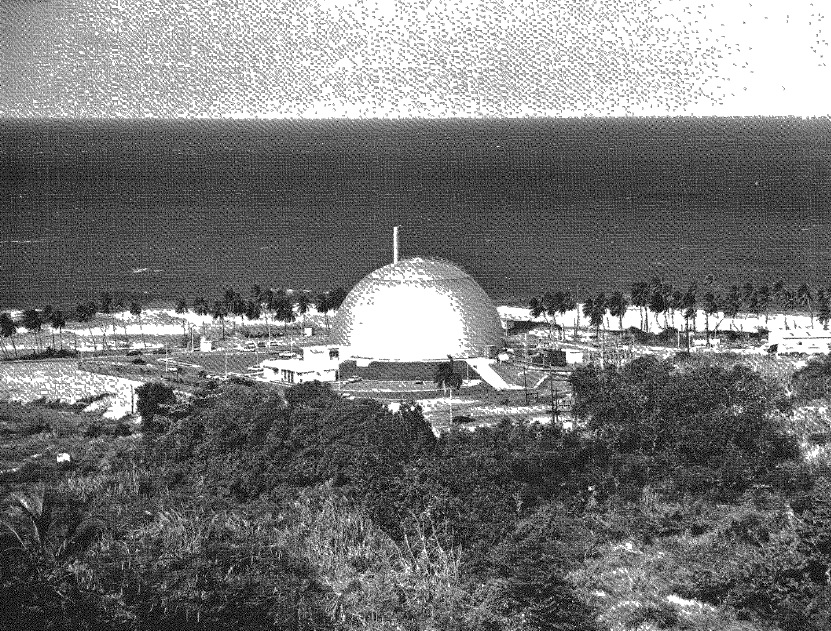Puerto Rico Disaster - Is Nuclear a Viable Option?
The recent destruction of Puerto Rico's electric power infrastructure has been on the front page of every important news source at one time or another since the event near the end of September. Recent reports show that perhaps as little as 10 to 15 percent of the island has electric power available now.
Although it hasn't really been broadly discussed until now, it's a fact that Puerto Rico has no indigenous fuel supply. No coal, no natural gas. In other words, the island has to import all the fuel it uses to make electricity (and to power all vehicles, of course.) In the discussions following the hurricane pundits have wondered whether it's time to install hardened and even underground transmission on the island so that the next hurricane (and there will be one, sooner or later) doesn't have the same effect. If that's the case, some (including this author) have asserted that perhaps nuclear energy is worth a second look for Puerto Rico.
The Past

BONUS nuclear plant, Punta Higuera, Puerto Rico as depicted in official completion report from Combustion Engineering in December 1964.
Puerto Rico does in fact have a history, albeit slight, with nuclear energy. The island was selected for the construction and operation of the BONUS experimental nuclear plant which, while certainly more oriented toward testing a new concept than staying online continuously, did provide over 16MWe to the island's grid while operating in the mid-late 1960s. The plant's construction and operation was detailed on this blog back in April 2016; see the story here.
All the while the Puerto Rico Water Resource Authority (PRWRA) intended that the island have a commercial (that is to say, non-demonstration or non-experimental) nuclear power station. This was finally actually ordered by PRWRA in May 1970. The plant was to have been a turn-key project with Westinghouse acting as prime contractor to the PRWRA; Westinghouse hired architect-engineer firm GIbbs & Hill to design the plant. The unit was to have been a smallish, two loop PWR rated 1785 MWt / 614 MWe gross / 583 MWe net, and was to have been located in Salinas, Puerto Rico. The name for the plant was to have been "Aguirre," but the project was stalled almost from the beginning. After lingering mostly as a dream for years, the plant was cancelled officially by PRWRA in 1978.
Today
According to the Energy Information Administration, Puerto Rico's retail electric prices have been at times roughly three times the average US retail price simply due to the fact that most of the island's electric power is generated by petroleum combustion. It appears sensible to assume that these prices will continue to vary widely as does the petroleum price - and according to EIA, the attempts to install natural gas plants or convert some of the oil and coal fired plants are stalled as LNG import terminals are not yet in place. (The island does have a limited LNG electric power capacity.)
With the island having a total electric generating capacity of about 6000 megawatts, it's not unreasonable to consider one or two nuclear power plants for the island - or perhaps better, one or two multi-module SMR nuclear plants, whose smaller per-unit output would greatly lessen impact on the grid should one unit go down for any reason. Of course, the major reasons to incorporate nuclear are today what they were in the 1960's - namely, desire to uncouple from the wide swings in fuel pricing, and of course also the desire to have over a year's worth of fuel installed in the plant. In a situation such as has occurred recently in Puerto Rico, the nuclear plant could literally be sitting, operating, waiting for the power lines to be put back up without concern of having to acquire more fuel, or concerns about destruction of fuel transloading facilities and piers.
News has been shared of the destruction of solar farms in Puerto Rico, with photos of the destroyed solar collectors. But look at the BONUS plant; sited on the very western most tip of the island, the plant was also completely fully contained, with not just the reactor but also the turbine-generator and the control room inside a heavily reinforced structure. Modern SMR plant designs, with the reactor modules already presently located below grade, could easily be adapted to a hardened structure such as was included at BONUS to meet the harsh environmental conditions known to occur infrequently but destructively in this part of the world. Indeed, if a nuclear plant was designed to survive there in the 1960's, we can design one to survive there now.
We can only hope that nuclear energy is once again considered for Puerto Rico. The island will have to address the devastation wrought in September one way or another, and will also have to try to plan how to meet the same exact type of threat in the future. Nuclear energy could, along with a seriously hardened transmission infrastructure, provide a reliable and storm-proof electric power source so that the island, when it's hit again, can commence its recovery immediately, possibly preventing many illnesses and deaths that might occur with no power and no communications. It might be hard, and expensive, but most things worth having usually are.

